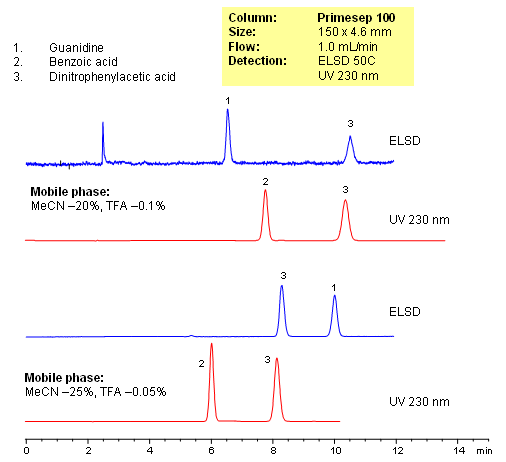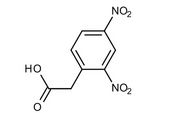| CAS Number | 643-43-6 |
|---|---|
| Molecular Formula | C8H6N2O6 |
| Molecular Weight | 226.144 |
| InChI Key | KCNISYPADDTFDO-UHFFFAOYSA-N |
| LogP | 1.1 |
| Synonyms |
|
Applications:
HPLC Separation of Guanidine and Benzoic Acids on Primesep 100 Column
October 4, 2007

| Column | Primesep 100, 4.6×150 mm, 5 µm, 100A |
| Mobile Phase | MeCN/H2O |
| Buffer | TFA |
| Flow Rate | 1.0 ml/min |
| Detection | UV, 230 nm, ELSD |
| Class of Compounds |
Acid, Hydrophilic, Ionizable |
| Analyzing Compounds | Guanidine, Benzoic acid, Dinitrophenylacetic Acid |
Application Column
Primesep 100
The Primesep family of mixed-mode columns offers a wide variety of stationary phases, boasting unprecedented selectivity in the separation of a broad array of chemical compounds across multiple applications. Corresponding Primesep guard columns, available with all stationary phases, do not require holders. SIELC provides a method development service available to all customers. Inquire about our specially-tailored custom LC-phases for specific separations.
Select optionsApplication Analytes:
Benzoic AcidDinitrophenylacetic Acid
Guanidine
Application Detection:
ELSD DetectionUV Detection

SIELC Technologies usually develops more than one method for each compound. Therefore, this particular method may not be the best available method from our portfolio for your specific application. Before you decide to implement this method in your research, please send us an email to research@sielc.com so we can ensure you get optimal results for your compound/s of interest.


